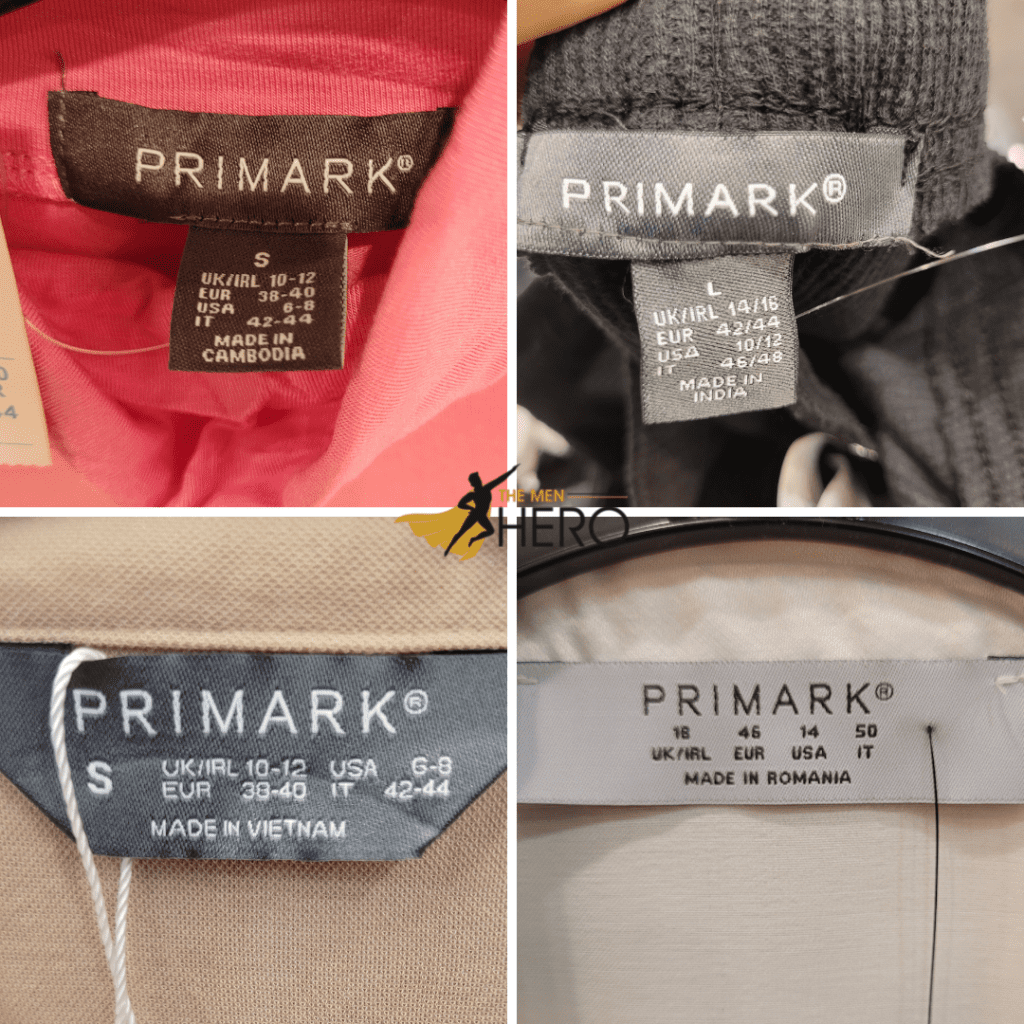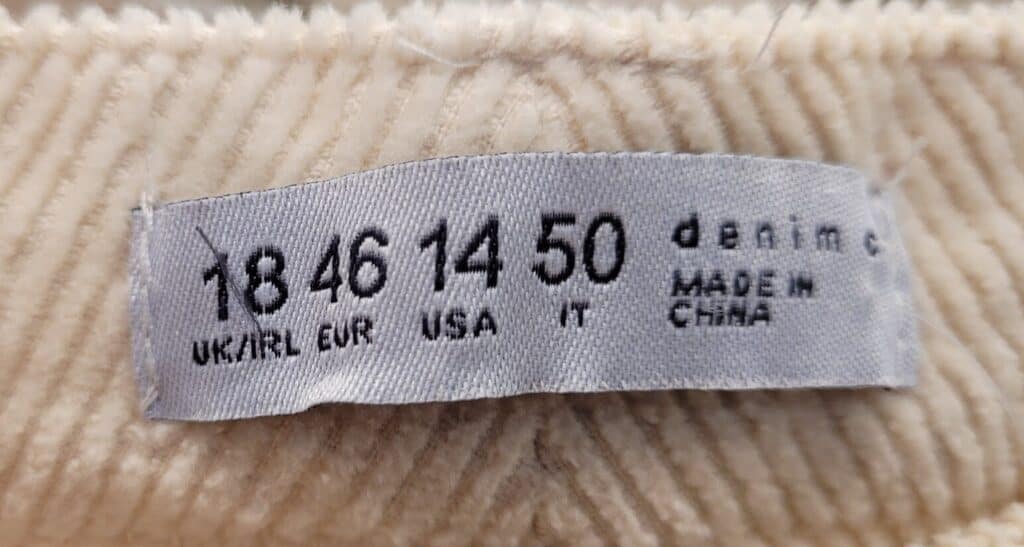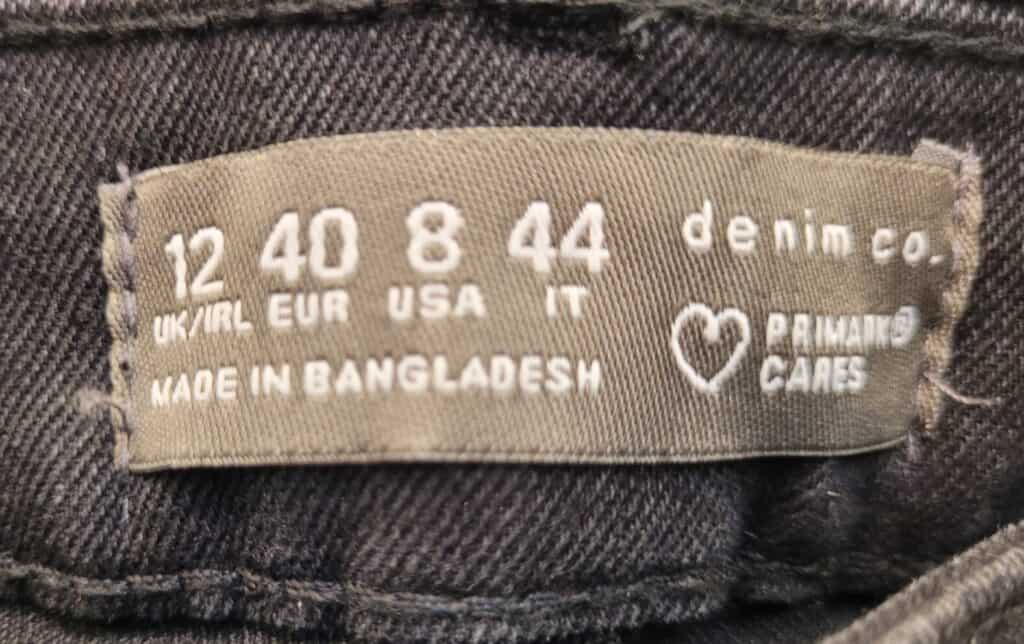This post may contain affiliate links. That means if you click and buy from that link, I may receive a small commission (at zero cost to you), which helps me maintain the quality of this blog. Please see my full disclosure policy for details.
Primark is the cheapest place for many shoppers to buy clothes and other fashion stuff you need daily. But where are Primark clothes made? Are Primark clothes cheap because the brand clothes are made in Asia, or does Primark manufactures in some surprising countries?
To confirm, I have decided to review hundreds of product descriptions on the Primark website to verify if the brand lists where the products are made. I also visited two Primark stores (London and Peterborough), checking the label of multiple items. So let’s find out where Primark clothes are manufactured.
Where Are Primark Clothes Made?
Primark is manufactured in Bangladesh, China, Turkey, Cambodia, Pakistan, Myanmar, Romania, India, Sri Lanka, Vietnam, France, Germany, Greece, Ireland, Italy, Morocco, Netherlands, Portugal, Moldova, Spain, Serbia, Slovakia, South Korea, Thailand, Tunisia, and the United Kingdom.

Primark doesn’t list where its products are manufactured on the product descriptions on its website. It doesn’t come as a surprise since other fast fashion retail brands like H&M, NEXT, Hollister, Pull & Bear, and Uniqlo, do exactly the same. Zara is the only mass-market label I can recall that states on its website where its products are manufactured.
Read: Where Are M&S Clothes Made?
However, Primark provides a global sourcing map with all the countries where the brand manufactures, stating that the map represents 94% of Primark production sites. Primark also says it currently outsources its products from 883 factories in 26 countries. I did the maths for you to know the percentage of where Primark manufactures the most:
China – 444 factories – 50.2%
India – 112 factories – 12.6%
Bangladesh – 103 factories – 11.6%
Turkey – 81 factories – 9.1%
Pakistan – 22 factories – 2.4%
Vietnam – 20 factories – 2.2%
Cambodia – 19 factories – 2.1%
Myanmar – 18 factories – 2%
Sri Lanka – 15 factories – 1.6%
United Kingdom – 13 factories – 1.4%
Italy – 6 factories – 0.67%
Portugal – 5 factories – 0.56%
Moldova – 4 factories – 0.45%
France – 3 factories – 0.33%
Ireland – 3 factories – 0.33%
Romania – 3 factories – 0.33%
Germany – 2 factories -0.22%
Tunisia – 2 factories -0.22%
Greece – 1 factory – 0.11%
Morocco – 1 factory – 0.11%
Netherlands – 1 factory – 0.11%
Serbia – 1 factory – 0.11%
Slovakia – 1 factory – 0.11%
South Korea – 1 factory – 0.11%
Spain – 1 factory – 0.11%
Thailand – 1 factory – 0.11
When I checked Primark products in-store, the country I found the most was Bangladesh, which according to Primark, is only the third biggest manufacturer of the brand. I didn’t see as many products made in China, which according to the Irish label, produces 50% of its apparel and accessories. Primark also doesn’t own any factory and only works with selective suppliers.
Read: Where Is Carhartt Made?
In-store, I have only found 10 of the 26 countries that are on Primark’s global sourcing map, and those countries were Bangladesh, China, Turkey, Cambodia, Pakistan, Myanmar, Romania, India, Sri Lanka, and Vietnam. I have to say that the countries I found in Primark labels in-store were the ones I was expecting. If I have discovered Italy, France, or the UK in a Primark tag, I would be surprised, which can happen but in a small percentage when compared with Asian countries.
Are Primark Clothes Made In Ireland?
Some Primark clothes are manufactured in Ireland. Dublin, Westport, and Claremorris are the three towns where Primark manufactures some of its products.
Read: Where Is Abercrombie And Fitch Made?
In-store, I didn’t find any Primark clothes manufactured in Ireland. Even if Primark is an Irish label, I was surprised to find out that the brand manufactures in Ireland, even if it’s only 0.33% of the products, which, let’s be honest, is nothing. Ireland’s manufacturing costs are much higher than in Asian countries, so I didn’t expect the brand to manufacture there.
Are Primark Clothes Made In China?
Yes, many Primark clothes are manufactured in China.

More than half of Primark production is made in China and happens in over 400 factories. Most of them are independent contractors who manufacture according to Primark’s needs. You can expect to find some factories in Anhui, Changshu, Dongguan, Fujian, Guangzhou, Tonglu, and Zhejiang.
Read: Where Is Jack Wolfskin Made?
Brand brands like Primark choose China because they can boost their profit margins. Cheap wages, materials, and facilities are why brands like to manufacture their products in China. However, in-store, I didn’t find as many Primark clothes manufactured in China as I thought I would. For example, I have seen many more Primark clothes made in Bangladesh than in China. Regarding accessories, China was the country I found the most in the product tags.
Are Primark Clothes Made In Bangladesh?
Yes, some Primark clothes are manufactured in Bangladesh.

As I said before, Bangladesh was the country I found the most when checking Primark products in-store. The Irish label works with many different suppliers in several cities around Bangladesh.
Read: Where Are Crocs Made?
Bangladesh is an excellent country for mass-recycling and fast fashion manufacturing, attracting more brands to produce their products there. This could be a reason why Primark is manufacturing so much in Bangladesh. Maybe the Irish company is trying to reduce the environmental impact of its business operations. Or perhaps Bangladesh is just one of the cheapest and best solutions?
Conclusion
Where are Primark clothes made? Mainly in China, India, and Bangladesh. You can also expect to find some other countries like Turkey, Pakistan, Vietnam, Cambodia, Myanmar, Sri Lanka, and others on a tiny scale.
Primark is one of the most affordable fast fashion brands in the world, if not the cheapest on the market, and that reflects the places where the brand manufactures the most, maintaining its costs and prices the lowest possible.
